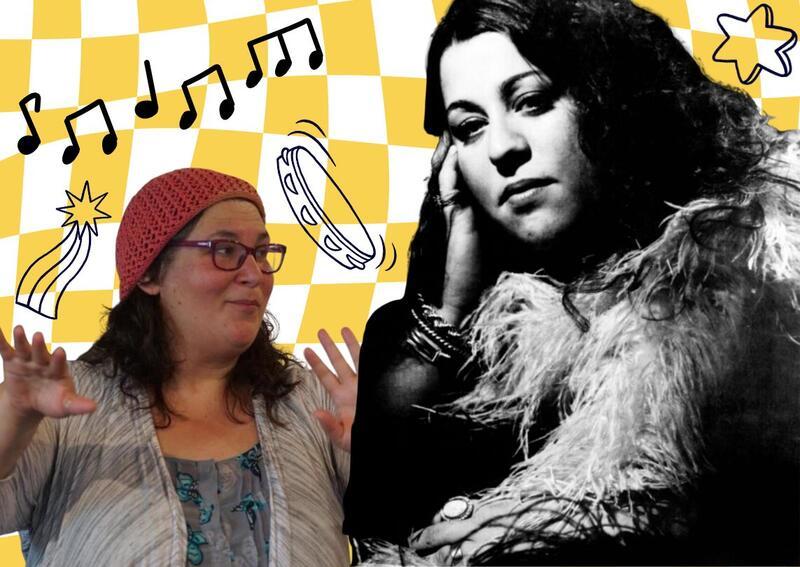Unearthing the Fat Underground
The stereotypical Jewish mother can often be found chiding a daughter or granddaughter about the food she does or doesn’t eat. This is ironic considering how integral food is to Judaism. It’s the way we bond, grieve, and express love. This relationship, however, is complicated by the neurotic food rituals often endorsed by older Ashkenazi women. If you were to ask my mother what her plans were on any given Sunday morning, she would most likely tell you that she was meeting her friends at Weight Watchers and going out to brunch afterward. Her relationship with food is a pattern of falling off the wagon and getting back on. Just like her mother and her mother’s mother, they complain about the way pants fit, and then follow it with a quick McDonald’s run. It's possible that their complicated relationship with food traces back to a deep anti-fat bias, which promoted antisemitic stereotypes for much of the twentieth century. This undoubtedly led to a complicated relationship between body image and Jewishness that many older women I know still struggle with. This led me to ask the vital question: Can body image and Judaism be untangled? Should they be?
The founding of the National Association to Advance Fat Acceptance (NAAFA) in 1969 is what most fat liberation activists and zine creators alike consider to be the start of the fat liberation movement. Since then it has undergone many changes and has evolved alongside our collective understanding of body image and weight. Size might always be a touchy subject for Ashkenazi women, but the strides taken by the Fat Liberation movement have helped all people, especially those who identify with the term fat, to understand and live with their bodies. Many of these pioneers were Jewish themselves, though Judaism was rarely a focal point in their work.
Early research into fat bodies by American and European doctors often scapegoated marginalized communities, blaming them for what they believed to be just another consequence of gluttony and greed. Jews were an especially easy target, considering our long history of being caricatured as wealthy, power-hungry sub-humans. There were even studies published describing Jews’ predisposition to diabetes, and in the 1920s diabetes was commonly referred to as a “Jewish disease,” or Judenkrankheit. Stereotypes like the “Fat Jew” became incredibly popular, though recent reclamations of these stereotypes have also become prominent on social media, such as Josh Ostrovsky, who goes by The Fat Jewish online (warning for NSFW content). Fatness became another way to separate Jews from the mainstream, an extra set of hurdles to overcome.
Jewish women, of course, were especially impacted by these stereotypes. Fatness for any woman was seen as undesirable, and the idealized homemaker of the 1950s was idolized by men as much as she was feared by women. She represented unattainable physical attributes and large-scale oppression. She was thin, obedient, and definitely not Jewish.
Shortly after NAAFA’s founding, the Fat Liberation Manifesto was published. Less than a year later, the movement lost one of its greatest proponents: Cass Elliot of the folk band The Mamas and The Papas. Cass Elliot was unabashedly defying preconceived notions of women, fat people, and Jewish people. However, the intersection of these identities was often the cause of her ridicule. Even in death, cruel rumors arose. The world, it seemed, was hesitant to give her the recognition she deserved because it would mean deconstructing what a celebrity is “supposed” to look like. On Women’s Equality Day in 1974, though, Judy Freespirit and the Fat Underground would eulogize Cass Elliot in a way many had been quick to forgo. They venerated her personal achievements and harshly criticized media publications that sneered at her untimely death. This act would help the movement gain national attention and would help establish them as a more radical counterpart to NAAFA. Notably, most of the founders of these organizations were queer Ashkenazi women.
Jews have a long history of looking at things from the outside in. And Jews are no strangers to the struggles that come with being an outsider. I think older generations (especially older Yiddish women), recognize this difficulty, maybe even more than I or any of my contemporaries do. They don’t seek to be exclusionary. I know my mother’s pinching and prodding translate to loving and caring. Their way of loving tries to limit how we, their children, might be seen as outsiders, whether it's for being Jewish, being a woman, or being fat. And if being skinny is a way to be seen as less Jewish, then so be it. They want our lives to be comfortable in a way theirs never were, a sort-of vicarious convenience.
Where we feel anger in overarching systems that allow for this marginalization, most first and second-wave feminists feel shame, similar to the way many Jews feel shame for generational trauma. Time and time again, shame has proven to be a misguided solution to systemic issues. Cultural phenomena like diet culture and body shaping tools work to actively “other” fat people. Generations of carefully packaged low-fat goods and shiny magazine covers teaching women to tummy tuck don’t disappear from the collective consciousness overnight. The notion that fat isn’t something to be feared isn’t new, but it takes time to unpack.
Not all Jewish people seek to perpetuate this cycle of quiet observation and shame, however. Fat Liberation advocates like Rabbi Minna Bromberg and Dr. Charlotte Cooper are working to incorporate fat acceptance into Jewish spaces. Rabbi Bromberg, specifically, has created the ground-breaking website Fat Torah, which is actively “smashing the idolatry of fatphobia and leading ourselves from Narrowness to Freedom,” which might be the greatest mission statement/metaphor for fat liberation I’ve ever heard. Dr. Charlotte Cooper has also created works of art and writing that have furthered these efforts. So have performance artists like Caleb Luna, educators like Merissa Nathan Gerson, and so many others.
Forty years ago, fatness was an unfortunate consequence of laziness. Now it is a revolution. So much so that we are able to bring more fat voices into Jewish spaces, as opposed to Jewish voices in fat spaces. Both are important, but as our understanding of fatness is changing at a societal level, our need for liberation has also changed. The fat acceptance movement, like other anti-prejudice movements, will continue to evolve as we do. There are a lot more difficult conversations to have. In the meantime, it’s necessary to understand that all Jewish bodies are important, no matter what they do or don’t look like. We have to care for each other in a way that makes every single body feel included. I know this level of collective acceptance in the Jewish community is possible. I know it is possible to see ourselves as we are, to interrogate the fatphobic ideas in our community, not internalize them, and to always lift each other up.
This piece was written as part of JWA’s Rising Voices Fellowship.








Another comment: Interested researchers can find documents and artifacts from the Fat Underground in the Special Collections of the library at the University of Connecticut, main campus, Storrs, Connecticut. I was a graduate student at UofC and donated these materials when I completed the degree and left the University in 1985.
Regarding the eulogizing of Cass Eliot at the 1974 Womens' Equality Day celebration, an information correction: The woman who spoke onstage was Lyn McAffee, not Judy Freespirit. The entire Fat Underground stood onstage with her. Lyn (then known going by the name Lyn Mabel-Lois) was a powerful activist for fat liberation throughout most of its existence, continuing work in the Fat Underground until her move to upstate New York in 1976. I offer this information as a founder of the Fat Underground and co-author with Judy Freespirit of the Fat Liberation Manifesto in 1972 or 1973 (I'm fuzzy with dates.) At that time I went by the name Aldebaran. Thanks in advance for acknowledging Lyn's role in this seminal (better: ovanal) event.
You mean everyone doesn’t complain about their pants being too tight and then head to McDonald’s?
A thoughtful, intelligent, and careful examination of a topic (several topics) that are often overlooked. Great work!